Vitamin C and Cancer
 Most people are aware of the important role that vitamin D plays in overall health but many are not aware of how vitamin C works to prevent cancer.
Most people are aware of the important role that vitamin D plays in overall health but many are not aware of how vitamin C works to prevent cancer.
Vitamin C is a known antioxidant, easily mopping up and relieving us of dangerous free radicals. An antioxidant like vitamin C is a molecule that has free electrons to donate. You might think of it as a particle with extra information to offer. It works to disarm harmful oxidants by giving them one of its free electrons making them stable and no longer any danger to your body. Continue reading
The Role of Fiber in Cancer Prevention
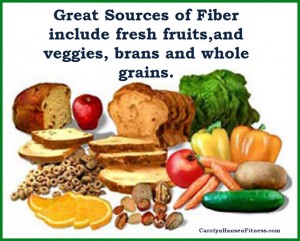 Add more fiber to your diet to boost your immune system against the risk of cancer.
Add more fiber to your diet to boost your immune system against the risk of cancer.
Fiber, often called bulk or roughage is the part of grains, fruits, and vegetables that your body cannot digest. It helps move food through your digestive tract, playing a key role in keeping it clean and healthy by removing any cancer-causing compounds before they create harm.
Waste contains carcinogens and its best if it is removed as quickly as possible to decrease chances for any intestinal cells to be damaged and affected. Further studies reveal that a substance called butyrate is produced when the bacteria in the lower intestine breaks down fiber. This substance may inhibit the growth of tumors of the colon and rectum. Continue reading
Cabbage for Cancer Prevention
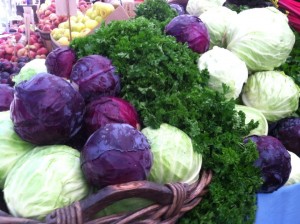 Brassicas are considered the world’s healthiest vegetables. They are a family of vegetables known for their disease fighting benefits and many know them by their more common name: cruciferous vegetables.
Brassicas are considered the world’s healthiest vegetables. They are a family of vegetables known for their disease fighting benefits and many know them by their more common name: cruciferous vegetables.
Just like most vegetables, they are low in calories, sodium and fat, a good source of fiber and a wealthy source of essential vitamins and minerals and are some of the best defenses against disease for adults.
These vegetables contain glucosinolates, sulfur-containing phytochemicals and studies reveal that consuming brassicas vegetables can significantly reduce the risk for a variety of cancers. Continue reading
Health Benefits of Walnuts
 Nearly all nuts pack a potent punch when it comes to nutrition and provide our bodies with an impressive list of essential nutrients and antioxidants.
Nearly all nuts pack a potent punch when it comes to nutrition and provide our bodies with an impressive list of essential nutrients and antioxidants.
Nuts offer the healthy kinds of fats and they are high in protein. They are also high in monounsaturated fats that help to lower cholesterol and soluble fiber which also helps by lowering cholesterol, regulating bowels and has recently been shown to lower the amount of fat stored in the abdominal area. In research done over 5 years, for every 10 grams of soluble fiber consumed, belly fat was decreased by 3.7%…pretty impressive.
They are no slouches when it comes to nutrients, providing rich sources of minerals: potassium, copper, calcium, phosphorus, potassium; iron, manganese, selenium, and magnesium. Since many American diets are lacking magnesium resulting in low magnesium levels, nuts can play a vital role in bridging that gap. Continue reading
Potent Power of Brussel Sprouts
 If you’re searching for the “perfect” food that is nutrient dense, tasty and easy to prepare, a rich source of antioxidants and phytochemicals (proven to fight cancer), look no further than under-appreciated Brussel sprout.
If you’re searching for the “perfect” food that is nutrient dense, tasty and easy to prepare, a rich source of antioxidants and phytochemicals (proven to fight cancer), look no further than under-appreciated Brussel sprout.
Although originally native to Belgium, they are now cultivated throughout Europe and the U.S. with nearly all U.S. Brussels sprouts now grown in California.
Brussels sprouts are an important dietary source of many vitamins and antioxidants including vitamins A and C, the mineral manganese, flavonoid antioxidants like isorhnnetin, quercitin, and kaempferol, as well as antioxidants caffeic acid and ferulic acid. They help us prevent chronic, excessive inflammation through a variety of nutrient benefits like their glucosinolate content. Continue reading
Help Your Body By Choosing Anti-Inflammatory Foods
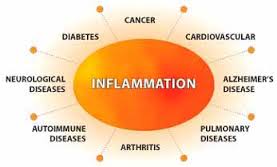 We hear the word inflammation tossed around a lot these days. But what exactly is inflammation and why should we be concerned?
We hear the word inflammation tossed around a lot these days. But what exactly is inflammation and why should we be concerned?
Inflammation is a process through which the body’s white blood cells and chemicals work at protecting us from foreign substances such as viruses and bacteria as well as infections. The chemicals from the white blood cells increases the blood flow to the injured area or area of infection resulting in slight warmth and redness as well as swelling in the tissues.
These increased cells within the injured area…like an injured joint, irritate the area causing swelling of the joint lining and eventually wearing out the cartilage that protects the bones. Continue reading
Avocado Lime Pie
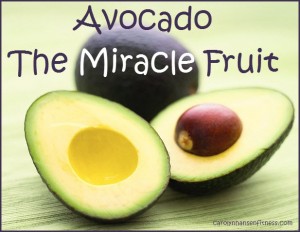 Avocados are amazing fruits and the health benefits of avocados have been known for a long time. However, few are aware that avocados can help in your diet, and prevent disease.
Avocados are amazing fruits and the health benefits of avocados have been known for a long time. However, few are aware that avocados can help in your diet, and prevent disease.
You could consider the avocado the perfect food because they contain all 18 essential amino acids plus all 7 fatty acids (including both omega 3 and 6).
This oval green queen is rich in valuable protein (contains more than cow’s milk) and fiber while providing important antioxidants.
Additionally, avocados contain lots of potassium and sodium protecting your arteries. Continue reading
Is Grass Fed Beef For You?
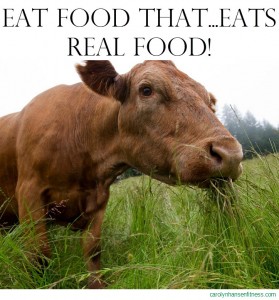 If you still enjoy a great steak dinner you are not alone. Humans have been eating and enjoying different kinds of meat since before we can remember and our bodies are well equipped to absorb and digest the nutrients from meat.
If you still enjoy a great steak dinner you are not alone. Humans have been eating and enjoying different kinds of meat since before we can remember and our bodies are well equipped to absorb and digest the nutrients from meat.
Tribes that are hunger-gatherers experienced excellent health and most of their calories came from eating meat.
Meat is a source of high quality protein as well as nutrients like Creatine and Carnosine…all three important for our brains and our muscles.
All red meat is incredibly nutritious even if grain-fed.
However, grass fed beef raises the bar even higher on nutrition because the diet that cows are fed has a significant impact on the composition of the beef that it produces. In other words, the nutrients in the beef we enjoy are directly related to what the cow is eating. Continue reading
Cashing in on Kale
 Kale is one of the newest super-foods and a very hot trend among the stars for its health benefits. All greens are nutritious but kale stands out from the crowd.
Kale is one of the newest super-foods and a very hot trend among the stars for its health benefits. All greens are nutritious but kale stands out from the crowd.
Kale is not new…in fact, it used to be called the “poor peoples food” and now it’s a considered a power-food! Kale adds a nice earthy flavor, has fewer calories than most foods with more nutritional value.
Curly kale has been around a long time and played important roles in European diets while dinosaur and ornamental kale are more recent additions.
Kale is considered a cruciferous vegetable and descendant of wild cabbage. It is in the same family as broccoli or cabbage, is rich with nutrients and offers unsurpassed health benefits. Continue reading
Treat Dad to Some “Raw” Love this Year
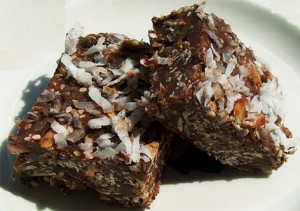 Anyone who has been diagnosed with cancer learns real quick how important it is to eat foods raw and as close to their natural state as possible.
Anyone who has been diagnosed with cancer learns real quick how important it is to eat foods raw and as close to their natural state as possible.
Living food. It is any type of food that has been grown in soil and harvested. It has not been cooked…at least not to the point that it destroys the enzymes that are for our benefit.
Not surprisingly, living foods provide life giving elements.
Raw living foods that can easily be added to your diet include raw fruits, nuts, veggies, seeds, sprouted grains of all sorts, and beans. They have not been processed, heated, nor cooked or altered in any way; they are close to their natural living state.
With Father’s Day coming… Continue reading